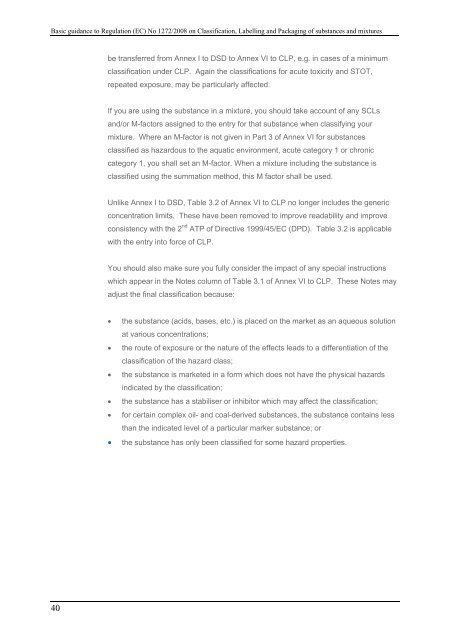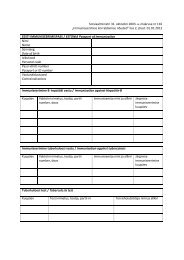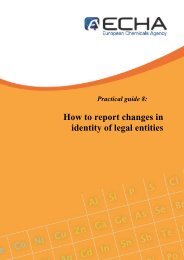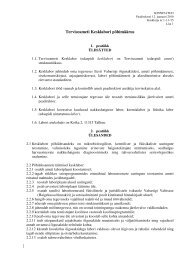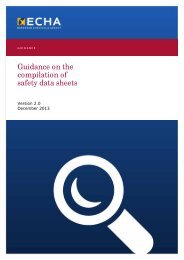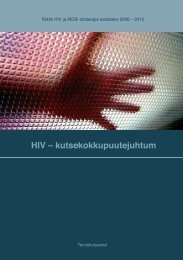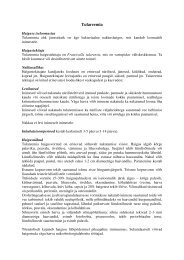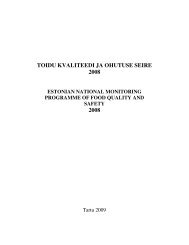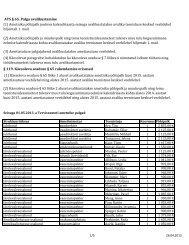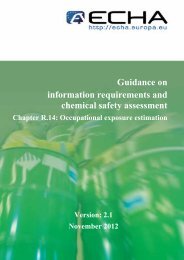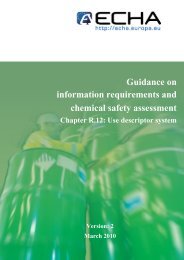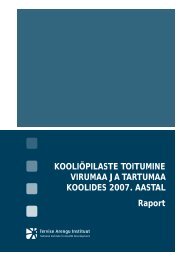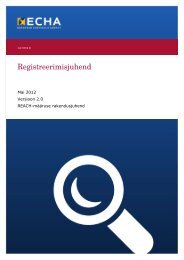Introductory Guidance on the CLP Regulation - ECHA - Europa
Introductory Guidance on the CLP Regulation - ECHA - Europa
Introductory Guidance on the CLP Regulation - ECHA - Europa
Create successful ePaper yourself
Turn your PDF publications into a flip-book with our unique Google optimized e-Paper software.
Basic guidance to Regulati<strong>on</strong> (EC) No 1272/2008 <strong>on</strong> Classificati<strong>on</strong>, Labelling and Packaging of substances and mixtures<br />
be transferred from Annex I to DSD to Annex VI to <strong>CLP</strong>, e.g. in cases of a minimum<br />
classificati<strong>on</strong> under <strong>CLP</strong>. Again <strong>the</strong> classificati<strong>on</strong>s for acute toxicity and STOT,<br />
repeated exposure, may be particularly affected.<br />
If you are using <strong>the</strong> substance in a mixture, you should take account of any SCLs<br />
and/or M-factors assigned to <strong>the</strong> entry for that substance when classifying your<br />
mixture. Where an M-factor is not given in Part 3 of Annex VI for substances<br />
classified as hazardous to <strong>the</strong> aquatic envir<strong>on</strong>ment, acute category 1 or chr<strong>on</strong>ic<br />
category 1, you shall set an M-factor. When a mixture including <strong>the</strong> substance is<br />
classified using <strong>the</strong> summati<strong>on</strong> method, this M factor shall be used.<br />
Unlike Annex I to DSD, Table 3.2 of Annex VI to <strong>CLP</strong> no l<strong>on</strong>ger includes <strong>the</strong> generic<br />
c<strong>on</strong>centrati<strong>on</strong> limits. These have been removed to improve readability and improve<br />
c<strong>on</strong>sistency with <strong>the</strong> 2 nd ATP of Directive 1999/45/EC (DPD). Table 3.2 is applicable<br />
with <strong>the</strong> entry into force of <strong>CLP</strong>.<br />
You should also make sure you fully c<strong>on</strong>sider <strong>the</strong> impact of any special instructi<strong>on</strong>s<br />
which appear in <strong>the</strong> Notes column of Table 3.1 of Annex VI to <strong>CLP</strong>. These Notes may<br />
adjust <strong>the</strong> final classificati<strong>on</strong> because:<br />
• <strong>the</strong> substance (acids, bases, etc.) is placed <strong>on</strong> <strong>the</strong> market as an aqueous soluti<strong>on</strong><br />
at various c<strong>on</strong>centrati<strong>on</strong>s;<br />
• <strong>the</strong> route of exposure or <strong>the</strong> nature of <strong>the</strong> effects leads to a differentiati<strong>on</strong> of <strong>the</strong><br />
classificati<strong>on</strong> of <strong>the</strong> hazard class;<br />
• <strong>the</strong> substance is marketed in a form which does not have <strong>the</strong> physical hazards<br />
indicated by <strong>the</strong> classificati<strong>on</strong>;<br />
• <strong>the</strong> substance has a stabiliser or inhibitor which may affect <strong>the</strong> classificati<strong>on</strong>;<br />
• for certain complex oil- and coal-derived substances, <strong>the</strong> substance c<strong>on</strong>tains less<br />
than <strong>the</strong> indicated level of a particular marker substance; or<br />
• <strong>the</strong> substance has <strong>on</strong>ly been classified for some hazard properties.<br />
40


